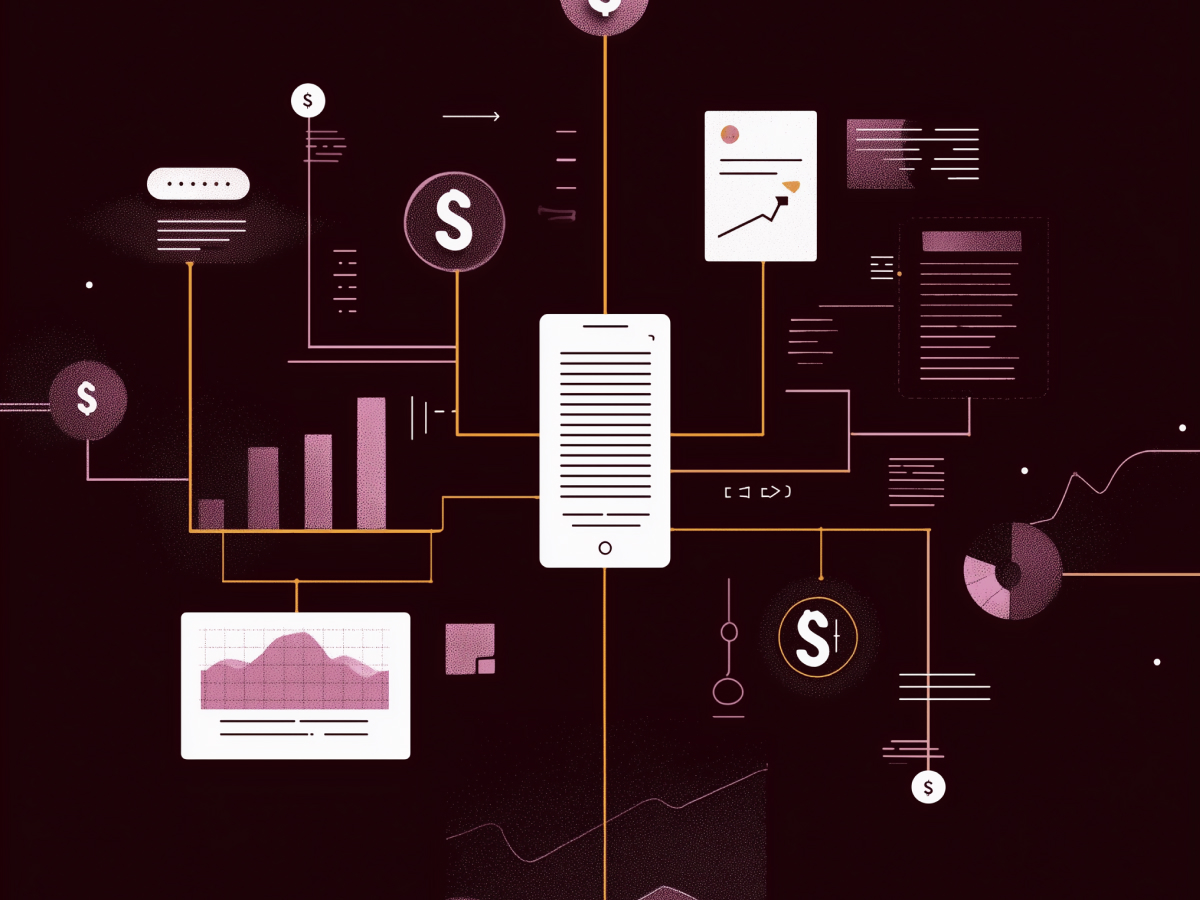Continuous learning is key for evolving engineering practices
Continuous learning isn’t optional for engineering teams, it’s foundational. In fast-moving environments, the risk is staying static while everything else evolves. What works today may be obsolete tomorrow. Engineering leaders who understand this create teams that are constantly upgrading their thinking, tools, and processes. They don’t settle into routines, they evolve them.
When a team commits to learning, product innovation becomes faster, decision-making gets sharper, and system design improves across the board. It also decentralizes growth. Rather than relying on one central expert or lead, everyone is advancing their skills in parallel, which compounds progress. This kind of momentum builds intelligent, scalable systems, systems that adjust quickly when needed and outperform over time.
This approach accelerates business execution. A knowledgeable team is a faster team, and speed aligns directly with competitiveness. When your SDLC evolves continually, you don’t patch over problems, you redesign for resilience. This won’t only reduce long-term risk, it creates engineering-led business advantages.
Garcia, a key engineering leader at Slack, focuses on this goal directly. He’s actively fostering a collaborative development culture where learning is ongoing, not event-based. For companies aiming to remain relevant in competitive markets, this kind of mindset isn’t a luxury, it’s required.
Removing silos improves collaboration and transparency in engineering workflows
Engineering organizations suffer collateral damage from silos. If engineers don’t know what others are working on, or can’t easily find out, coordination breaks. Delayed communication, duplicated effort, and misaligned systems become a daily tax on performance. That’s what silos do: slow things down and add invisible costs. Fixing this at the infrastructure level isn’t about buying tools, it’s about enforcing habits of openness.
At Slack, they’ve eliminated friction through open knowledge-sharing channels. These public spaces allow engineers across lines of responsibility to join technical discussions at any stage, concept, implementation, or performance tracking. Technical documents are posted broadly. Feedback gets looped into the process early. Real-time dialogue helps engineers spot dependencies, raise flags, and stay aligned across builds.
This sort of open access doesn’t just make collaboration smoother, it gives leaders full visibility into system complexity. That’s critical. When engineering teams are operating in public by default, documentation scales with the work, and tribal knowledge starts to vanish. Review cycles become faster and decision-making improves because context isn’t hidden behind a series of private messages or ad hoc meetings.
Garcia points out that Slack has embedded automation to track and share technical specs in real time, keeping the team focused and aligned. Documentation is not just stored; it’s circulated and reviewed across the team in a structured yet accessible way. For a C-suite leader, this means your engineering velocity is synced with business needs, and your development strategy responds faster to shifting priorities or external demands. You see what’s being built, why it’s being built, and where it can go wrong, before it does.
Removing silos adds predictability to innovation. And when you’re scaling aggressively or launching new products, predictability isn’t a constraint, it’s power.
Frequent sharing and early feedback improve development outcomes
Speed without alignment creates risk. When developers share early-stage work in public channels, they reduce that risk significantly. It allows teams to spot weak points, identify opportunities for optimization, and correct course before the cost of changes escalates. Sharing frequent updates builds feedback loops that reduce rework and help validate technical decisions before launch pressure sets in.
At Slack, engineers regularly post prototypes, ideas, and technical questions early in the development cycle. This creates a culture of iteration over perfection. It opens the door for timely peer feedback across disciplines, everyone works from the same context, and engineers can adjust their work based on relevant insights. When everyone has access to ongoing work, feedback focuses on outcomes instead of personalities, which drives more objective, improvement-focused conversations.
Early sharing also benefits engineering managers. When managers see what’s evolving across systems over time, not just at review checkpoints, they make better structural decisions. They can course-correct the wider system architecture to improve scale, integration, and reliability. It’s not just about line-by-line code quality. It’s about engineering leaders gaining real-time clarity on how technical components impact end-to-end outcomes.
Garcia highlights that these discussion spaces inside Slack ensure engineering managers aren’t artificially separated from the work. Visibility stays intact, and strategy stays connected to execution. For executive teams, this eliminates information lag and pushes implementation alignment closer to the company roadmap. Adjustments happen earlier, development time tightens, and output quality improves.
Cross-functional knowledge broadens problem-solving and fosters creativity
Engineering progress benefits from range. Pure technical competence can only scale so far before it runs into barriers, usually tied to communication, team friction, or mental rigidity. When engineers understand subjects beyond their immediate function, behavioral psychology, organizational design, human systems, they navigate those roadblocks more effectively. It improves how they think, not just what they build.
Garcia has actively encouraged cross-disciplinary learning within his teams. He believes it gives engineers a more complete decision-making toolkit and fosters higher team cohesion. One initiative he implemented, a team book club, was launched to address unresolved tension across a fragmented team. The experiment began with a low commitment, just two chapters, but the result was lasting. They went on to read across topics like team dynamics, systems leadership, and software development processes. These discussions elevated problem-solving and reshaped how people communicated.
Cross-functional knowledge doesn’t dilute technical depth, it expands it. It teaches technical teams to think upstream and downstream. They begin communicating in clearer terms, understanding stakeholder perspectives, and designing with broader impact in mind. It also helps identify gaps in process thinking before they become scaling issues.
From a business leadership standpoint, this type of capability is a multiplier. You don’t need your engineers to be sociologists or business strategists. But when they can frame problems in unfamiliar contexts and respond with clarity, the quality of execution rises across the board. Flexibility of thought enables higher resilience. And resilience speeds up adaptation when the environment shifts, which it always will.
Empathy and individual career awareness drive personalized learning and team motivation
You get better performance from product teams when you understand what people care about. If you know where engineers want to go, what roles they aim for, what skills they value, you can connect learning with ambition. That eliminates friction. People stop waiting for permission and start pursuing growth with direction.
Garcia points out that effective engineering leadership includes recognizing individual contributors not just for how they execute but for where they’re headed. He supports this by encouraging engineers to write about their ideas and areas of curiosity. That process of thinking, writing, and explaining gives people more clarity and drives technical development. It also helps surface emerging technologies and patterns that might scale across the team or product area.
When leaders take time to see potential at a granular level, they create better targeted opportunities, projects that challenge the right problems, mentorship that closes the real gaps, learning tracks that don’t waste time. This doesn’t just improve team culture. It produces better output. You’re linking work to internal motivation, and that drives consistency even in systems that demand adaptability.
From a C-suite perspective, this has a direct ROI. An engaged team doesn’t burn out as quickly. Turnover slows. Team cohesion improves, and institutional knowledge grows deeper. Personalizing development helps the company retain top engineering talent and ensures leadership candidates are shaped early, efficiently, and within values aligned to the business strategy.
Learning fuels quality, consistency, and long-term business impact
Teams that stop learning lose alignment with the market. You can’t decouple sustained product performance from engineering team evolution. If technology moves forward and teams don’t keep up, reliability drops. Long-term quality isn’t about individual output, it’s linked to the system’s ability to absorb change and improve under pressure.
Garcia argues that the signs of a strong learning culture are reflected in key product metrics: better feature performance, shorter development timelines, higher quality releases, and stronger collaboration. These don’t happen by accident. They stem from teams that regularly test new approaches, adopt what works, and discard what doesn’t.
The complexity of modern software makes top-down improvement slow. That’s where a learning-driven culture makes an impact. It decentralizes progress. Developers at all levels are attuned to change, experimenting with tools, refining workflows, and keeping the system responsive. Even if you can’t quantify it with one perfect metric, you can track it through system-wide behavior: Are bugs being caught earlier? Are release cycles compressing without loss of stability? Is technical debt being managed proactively?
For executives, this should shift how engineering performance is measured. Output volume matters, but outcome quality signals maturity. Teams deeply rooted in a learning mindset don’t just ship more, they build systems that last, scale, and operate without reactive overcorrection. That’s the kind of engineering capability that supports sustained business execution and compound growth over time.
Experimentation leads to innovation, but execution ensures consistency
Trying new approaches isn’t risky, it’s required. The real risk is scaling older systems that were built for past conditions. Teams that experiment with tools, frameworks, and architectural changes are better positioned to solve today’s problems in real time. But experimentation only drives value when it leads to repeatable, consistent delivery after the right approach is identified.
Garcia reinforces this distinction. He supports teams at Slack in exploring new solutions, patterns, and technologies to improve engineering outcomes. But once an approach proves effective in development, it’s standardized for production. That tightens operational control where it matters most, in the systems customers depend on. Result: the build process remains flexible, while the production environment stays predictable.
This mindset balances innovation with stability. Teams are encouraged to question what exists, test new paths, and optimize in development cycles. But leaders define boundaries on the backend that ensure consistency and reliability. This builds confidence internally and externally. Customers experience fewer failures, systems scale with less friction, and delivery timelines become sharper.
For a C-suite audience, understand this is not about choosing between innovation and control. It’s about sequencing them correctly. Experiment first, then standardize. That’s how you scale precision. Establishing clear expectations on when to explore and when to execute removes ambiguity. Teams know where they can push boundaries, and where they can’t afford surprises.
Garcia makes the point clearly: development timelines can be fluid; production timelines should not be. Once you know what works, you make it the standard. That’s how you produce consistent outcomes while still encouraging progress. For technical leadership, it’s a model that preserves speed, protects uptime, and aligns delivery with market timing, without compromising reliability.
In conclusion
Engineering doesn’t move forward unless your teams do. And team progress isn’t just about better tools or faster delivery, it’s about structured, continuous learning built into the core of how work happens.
When you prioritize open collaboration, fast feedback, interdisciplinary thinking, and individual growth paths, you’re not managing talent, you’re unlocking velocity. You get systems that adapt under real pressure, teams that surface better solutions on their own, and workflows that scale without constant intervention.
This isn’t optional. The environment is moving quickly. If your technical organization can’t absorb change, learn at every level, and execute with consistency, the gap between vision and output grows fast.
Leaders don’t need to micromanage this process. They need to design for it, clarify expectations, fund growth, support healthy team dynamics, and remove barriers to open knowledge. The payoff is measurable in time saved, risk reduced, talent retained, and business goals hit with precision. That’s not theoretical. It’s operational leverage.





